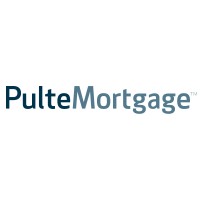
Pulte Mortgage
Pulte Mortgage is a wholly-owned financial services subsidiary of PulteGroup, Inc. (NYSE: PHM) that solely focuses on the financing of new construction homes for customers of Pulte Homes, Centex, Del Webb, DiVosta, and John Wieland Homes brands. Founded in 1972, Pulte Mortgage has financed more than 700,000 homes from coast-to-coast while offering borrowers more than 200 different home loan solutions. Pulte Mortgage works hand-in-hand with the homebuilder to allow a closely-coordinated, streamlined financing experience that never misses a beat. Pulte Mortgage is an equal opportunity employer that is committed to inclusion and diversity. For more insight into working at Pulte Mortgage, view our Muse page here: https://www.themuse.com/profiles/pultemortgage Company licensing information can be found at: https://secure.pultemortgage.com/Information/ContactUs.aspx Pulte Mortgage LLC - NMLS ID: 1791






